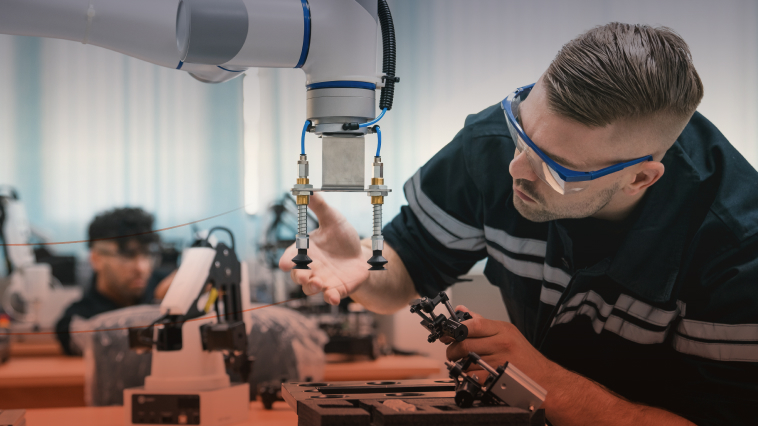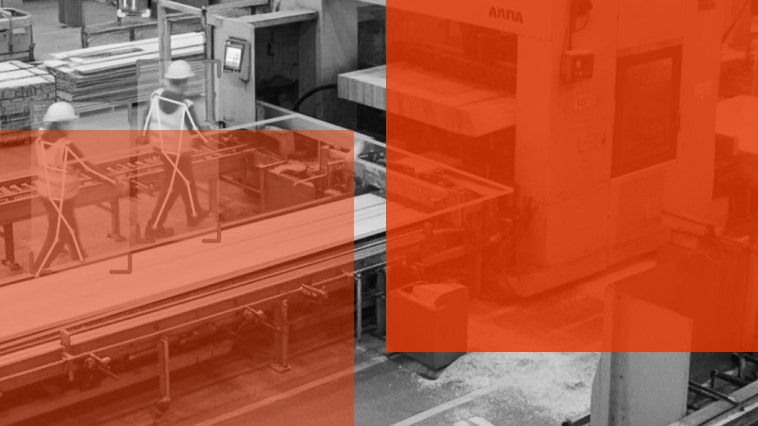At Intenseye, our journey began with a simple observation. As I visited over 50 flagship manufacturing facilities across various industries, I met exceptional EHS teams working tirelessly to ensure bridging the gap between safety work and safety of work.
Despite having thousands of frontline employees, there were only a few safety team members with limited resources. Their day-to-day jobs revolved around covering safety work, leaving them little time to focus on leading safety indicators and the safety of work.
I couldn’t help but notice the stark contrast between the abundance of new technologies, such as AGVs (Automated Guided Vehicles), flying drones, automated robots, and advanced monitoring systems, being used to increase production, efficiency and the seemingly outdated approach to workplace safety that primarily relied on lagging indicators with pen and paper mostly.
This observation led us to question why the same technological advancements that were transforming other aspects of manufacturing hadn’t yet been applied to workplace safety.
This realization became the foundation of the Intenseye idea, aiming to bridge the gap between safety work and the safety of work by leveraging transformative AI technology.
A brief history of safety approaches
Workplace safety has come a long way since the early 20th century when basic safety regulations were first established. As industries evolved and workplaces became more complex, so did the focus on employee health and safety.
Traditional approaches to workplace safety, often referred to as “safety work,” have laid the groundwork for modern practices. However, they have not kept up with the rapid advancements in technology and the changing needs of today’s workplaces.
Intenseye, a leading AI-powered safety management software company, steps in to connect safety work and the safety of work.
Safety work started with the introduction of labor laws and regulations to protect workers from hazardous conditions in the early 20th century. Over time, as industries evolved and workplaces became more complex, new safety standards and guidelines were established. Companies began adopting a more proactive approach to safety, focusing on hazard identification, risk assessment, and control measures.

Despite these advancements, traditional incumbent software platforms have primarily focused on managing and recording safety work, rather than improving the safety of the work itself.
These platforms have not adequately addressed the need for real-time hazard identification and mitigation, often relying on lagging indicators such as incident reports and injury rates rather than leading indicators that provide a more proactive approach to safety.
Before discussing how AI can accelerate the transition from 'safety work' to 'safety of work', let's briefly introduce the concepts of safety work and safety of work.
What is safety work?
Safety work refers to various activities within organizations that primarily focus on managing safety. According to Provan et al. , safety work involves purposeful efforts to create, maintain, or disrupt aspects of an organization to improve safety.
These activities include risk assessments, safety training, incident investigations and reports, and the development and implementation of safety policies and procedures.
However, safety work can be perceived as less value-adding and peripheral to the primary objectives of the organization and sometimes conflicts with the safety of work.
What is safety of work?
In contrast, the safety of work is about preventing injury and creating a safe work environment. It focuses on goal-directed behavior and the continuous improvement of safety performance. Safety work has the potential to contribute to the safety of work, however, safety of work, by definition, "aims to directly achieve the primary purpose of the organization.”
By focusing more on proactive safety risk reduction, organizations can shift their safety management approach from reactive to proactive, identifying and addressing hazards before they lead to incidents.
This shift enables the safety of work to be more closely aligned with the overall goals of the organization, and it is where next-generation technology solutions come into play.
How AI can bridge the gap
EHS professionals are often caught between completing administrative tasks related to safety work and focusing on more value-adding activities that ensure the safety of work. But AI can accelerate a shift from safety work to safety of work to address this dilemma.
Providing 24/7 real-time leading safety indicators
Lagging indicators have long been the foundation of safety work, providing valuable information on past safety performance. However, their retrospective nature makes them less effective in driving proactive safety measures and improvements.
Conversely, leading safety indicators offer real-time insights and a forward-looking perspective on safety, allowing organizations to take a more proactive approach to managing the safety of work. But computer vision AI can provide real-time data-based analytics to quantify how work is performed at the sharp end.
As David Provan explains, safety professionals usually find it difficult to influence leaders to perform proactive safety leadership activities.
Shifting the mindset from relying on lagging indicators to embracing leading indicators can be challenging, as it requires organizations to adopt a proactive approach and transform their existing safety culture. I remember a conversation with an EHS team considering deploying our solution. This particular facility had identified machine-man interactions as their top risk hazard.
Although they had the most engineering controls in place, they still had the highest incident rate among the company’s portfolio. They had weighted mattresses to control confined space entry, light curtains to automatically trigger machine shutdown, and light controls to make machine operations or stops visible for all frontline teams.
We managed to convince them to deploy Intenseye in their facility and see the data we might uncover. The results were eye-opening: within the first 24 hours, during a night shift, Intenseye detected over 100 critical unsafe acts and conditions.

Today, this customer has deployed Intenseye in all of their facilities and production lines across 10 locations. They have integrated our real-time alerts to stop production lines when a critical unsafe act occurs.
EHS management now relies on our leading indicator data to prioritize their initiatives and set new targets, showcasing the power of focusing on the safety of work and the value of real-time, data-driven insights.
Building a positive & shared safety culture
It is crucial for organizations to emphasize the significance of safety and demonstrate their commitment to it in order to establish a culture where safety is given utmost priority in every aspect of their operations.
However, creating such an environment can be challenging due to the complex social dynamics and conflicting demands within organizations.
Intenseye's real time insights generate an alignment on future safety strategies and ownership from both frontline teams and management due to its objectivity.
The data-driven approach helps close the gap between the work as imagined and work as done as well as the gap between frontline teams and management.
By giving workers a voice, Intenseye helps to create a more inclusive and collaborative work environment that benefits everyone involved.
Intenseye empowers them to share their experiences and insights with management, enabling them to make better-informed decisions. This not only increases the level of trust between workers and management but also creates a culture of shared responsibility and accountability.

Empowering EHS teams
Safety professionals invest a significant amount of time and effort in developing and implementing safety processes, ensure and verify compliance. They also should perform the necessary safety practices to ensure a healthier and safer work environments.
Computer vision AI has the potential to transform the way safety work is conducted by automating and streamlining key processes.
By leveraging this technology, EHS professionals can save significant time and resources, allowing them to focus on improving workplace safety while simultaneously managing risk and driving value.
Moreover, AI can act as a "source of truth" for EHS teams by providing accurate and reliable data that can be leveraged to gain leadership support, secure the resources needed to drive continuous improvement, and quantify the impact in real-time, while gathering data in a more efficient and automated manner.
This way, AI can engage all stakeholders in a more effective and ethical way.
Shaping the future of safety management
This shift in safety management is driving the evolution of safety work, with a stronger focus on the safety of work. Intenseye is at the forefront of this shift, offering AI-powered safety management solutions that seamlessly integrates with existing facility cameras to provide real-time leading indicator data and a proactive approach to safety management.
By bridging the gap between safety work and the safety of work, these solutions are transforming workplace safety culture and improving the well-being of employees across various industries and regions.



